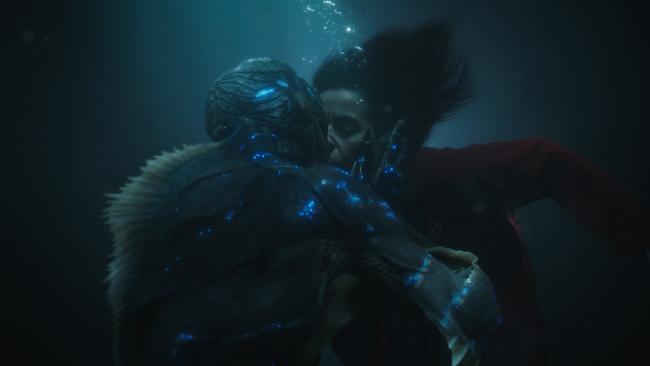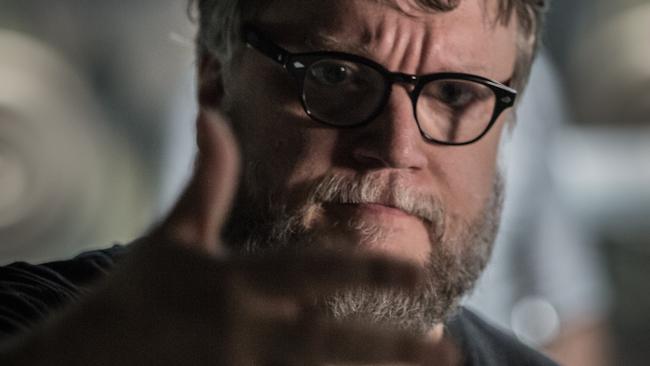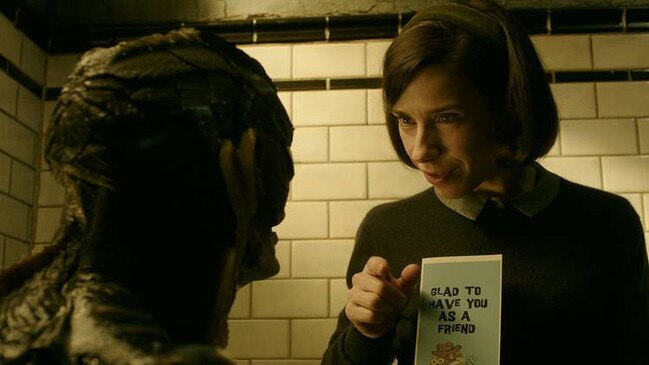Submerged in love: Guillermo del Toro’s The Shape of Water
Romance between a sea creature and a woman is nothing strange for Guillermo del Toro.

Guillermo del Toro’s The Shape of Water — originally subtitled “a fairytale for troubled times” — is one of the films of 2017. It’s a work no other filmmaker could have conjured up, a beautiful, fluid, unexpected dream of a movie, a tale of a silent woman and an amphibious creature, Hollywood musicals and hard-boiled eggs, Cold War paranoia and romantic love.
Del Toro wrote The Shape of Water for his actors, above all for the extraordinary Sally Hawkins. She plays Elisa, a mute young woman who lives above a classic cinema in 1960s Baltimore and works as a cleaner
in a secret military facility. One day, a new acquisition appears at the facility: an amphibian known as “the asset”, found in a South American river and brought to the US for covert testing. To Richard Strickland (Michael Shannon), the ruthless government agent in charge of the operation, the creature is a filthy, dangerous monster. To Elisa, he’s a source of wonder and desire, and she’s prepared to risk everything for him.
Her attitude is a recurring element in del Toro’s films: the familiarity, the allure — and the hope — that the so-called monstrous represents. In his cinematic world, what is also important about the monstrous is that it should be seen, clearly and unmistakably.
The Shape of Water is not a horror movie but it reflects the approach del Toro takes when he is dealing with the strange, the uncanny and the supernatural. Several years ago, when I talked to him about films that inspired him, he described what he loved about classic Mexican horror. “It has a very particular flavour, an almost shameless quality in the way it mixes horror, historical drama and sci-fi with a sort of free association, almost a stream of consciousness.”

European and American cinema generally go to great pains to suggest rather than depict the presence of a monster, del Toro said, but “in Mexican films ... the monster was always there, shown again and again and again and again. Crappy as it was — and a lot of them were — as a child I found it very satisfying that you could always feast your eyes on the monster.”
Those qualities — openness, visibility and a willingness to mix genres — have been important to him. Not that he’s opposed to ambiguity or suggestion: one of his favourite films, for example, is Jack Clayton’s 1961 Henry James adaptation, The Innocents, about a governess convinced the house is haunted. But as a filmmaker, although he revels in subtle detail, he’s not afraid of the obvious.
Del Toro was born in Guadalajara, Mexico. in 1964. From his earliest years, he immersed himself in literature, comics, art and movies. He started making films as a teenager; he also founded a special effects house that catered to the local industry. By the time he directed his first feature, Cronos, at the age of 26, he had already worked on a host of films.
Del Toro is a great enthusiast. He loves to celebrate the work of others, to talk about the art, writing and filmmaking of other people. He’s also a creative contributor, with an extensive CV as a producer.
He’s an avid collector — in Los Angeles, he has a second home, known as Bleak House, filled to the brim with his treasures, which range from personal memorabilia to art, to props, to books and comics. Bleak House is not a museum, however; it’s a working space, a place where he writes and seeks inspiration.

In a way, the collector’s passion is there in his movies — in the active, engaged sense. Everything is possible, but nothing is there by chance: each element in the frame has a story to tell. The colour palette of The Shape of Water is an important part of the storytelling; objects, references and background detail are the source of rich, accumulated meaning. Del Toro’s notebooks are testimony.
Cronos — an unusual, touching vampire tale — led to his first Hollywood feature, Mimic, somewhat compromised by producers’ demands. His subsequent works in Hollywood include two highly personal takes on the Hellboy comic books; Blade II, the further adventures of Marvel’s vampire superhero; and Pacific Rim, a smashing, over-the-top spectacle of huge robots pitted against giant sea creatures.
Before The Shape of Water, his strongest, most fully realised films were his Spanish-language works, Pan’s Labyrinth and The Devil’s Backbone, rich and compelling combinations of history, the supernatural and a child’s vision of the world. He wrote The Shape of Water with several of his cast in mind: not only Hawkins but also Shannon and Octavia Spencer, who plays Elisa’s supportive, voluble colleague.
And he created a lead role for Doug Jones, with whom has worked several times. Jones is a visible yet barely recognisable figure in the films of del Toro and others. Tall, elongated, with narrow shoulders and long fingers, he’s a trained mime who has lent his talents to many special-effects sequences. For del Toro, who likes his visual effects to be tactile, tangible and created in camera, he’s an ideal collaborator.
Jones did some scenes in Mimic, in which he played an insect. Five years later, he appeared in Hellboy and Hellboy II as Abe Sapien. He played two roles in Pan’s Labyrinth, the Faun and the Pale Man. In Crimson Peak, del Toro’s gothic romance, he created the enigmatic ghosts, male and female, who stalk a haunted house.
Now, in The Shape of Water, his physical eloquence is at the centre of things. Elisa and the creature are both wordless: they communicate through look and gesture.
And in del Toro’s mind, The Shape of Water is not really Beauty and the Beast, at least not as it is generally told. In this story, the beauty is not a captive who falls for her jailer and the beast does not have to be transformed into an acceptable human form. In The Shape of Water, love isn’t about becoming someone else, it’s about acknowledging and embracing who you are, who the other is, and who you can be together.
The Shape of Water opens on January 18.
